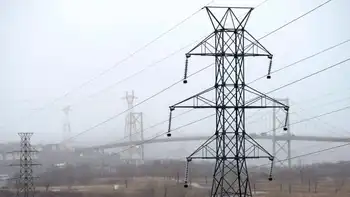Reducing electronic power usage researched
- Making a cellphone battery last ten times longer is a first target for a large research project that IBM, Infineon and a number of European universities unveiled recently.
The new research project, called Steeper, also aims to decrease the energy needs of other electronic devices like TV sets or supercomputers by 10 times when active, and to virtually eliminate power consumption when they are in standby mode.
Short battery life is an increasing problem for consumers needing to charge their phones daily, and for top smartphone vendors - Nokia, Apple and RIM - alike.
"Battery technology has not kept up with the increasing power demands of today's smartphones. As such, power management and efficiency is the biggest challenge facing smartphone vendors in delivering a great, consumer-friendly user experience," said Canalys analyst Tim Shepherd.
Electronic devices currently account for 15 percent of household electricity consumption, according to the International Energy Agency IEA, and their energy needs will triple by 2030.
"Our vision is to share this research to enable manufacturers to build the Holy Grail in electronics, a computer that utilizes negligible energy when it's in sleep mode, which we call the zero-watt PC," said project coordinator Adrian Ionescu from Ecole Polytechnique Federale de Lausanne.
Scientists will apply nanotechnology to lower electricity consumption, cost and extend battery life of electronic devices, aiming to at least halve the operating voltage needed by transistors to operate.
"Improving 1,000-fold performance of a supercomputer means you need 1,000 times more power. You basically need a power plant next to your data center," said Heike Riel, who leads the nanoscale electronics group at IBM research center in Zurich.
Data centers such as those run by Google Inc already use more than 1 percent of the world's energy and their demand for power is rising fast with the trend to outsource computing.
Standby power already accounts for about 10 percent of the electricity use in homes and offices, the European Union has estimated.
Related News

U.S. Department of Energy Announces $110M for Carbon Capture, Utilization, and Storage
WASHINGTON - The U.S. Department of Energy’s (DOE’s) Office of Fossil Energy (FE) has announced approximately $110 million in federal funding for cost-shared research and development (R&D) projects under three funding opportunity announcements (FOAs). Approximately $75M is for awards selected under two FOAs announced earlier this fiscal year; $35M is for a new FOA.
These FOAs further the Administration’s commitment to strengthening coal while protecting the environment. Carbon capture, utilization, and storage (CCUS) is increasingly becoming widely accepted as a viable option for fossil-based energy sources—such as coal- or gas-fired power plants and other industrial sources—to lower their carbon dioxide…




